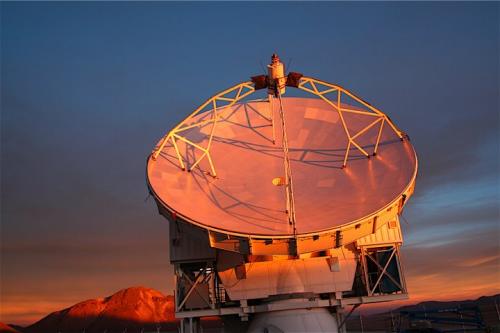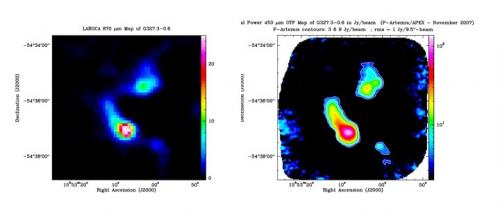The first wide-field maps were obtained with the prototype camera of ArTéMiS, a wide-field new generation bolometer camera, on APEX telescope on the Chajnantor plateau in Chile. These astronomical observations were carried out thanks to three ESO and Swedish time project on APEX. The Saclay astronomers have imaged the thermal emission of cold dust grains that are embedded in star-forming cores and in proto-planetary/deris. Among the imaged regions, NGC3576, G327.3-0.6, S255, NGC2264, high-mass star-forming regions, and HD97048 et Beta-Pictoris, a protoplanetary and a debris disks were mapped and detected.
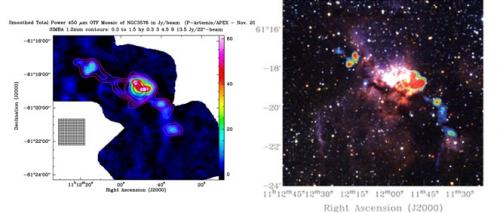
NGC3576. Left: 450-µm dust continuum emission image with p-ArTéMiS and 1.2-mm contour overlaid. The angular size of p-ArTéMiS filled bolometer array is shown. 450-µm observations resolve the 1.2 mm emission in massive clumps in which high-mass stars currently form. Right: Near-infrared image with 450-µm image overlaid. The bright central region harbour a cluster of young stars and a HII region. 450-µm emission arises from the edge of HII region as well as from adjacent 'dark', reservoirs of cold gas.
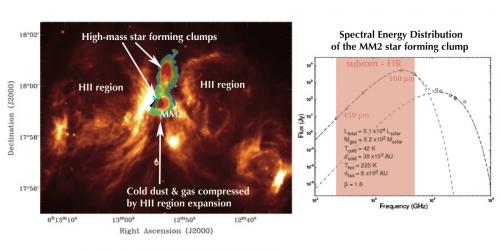
S255. Left: Spitzer IRAC image of thermal dust emission and PAH emission around HII regions. The RGB image overlaid on the Spitzer image is the cold dust emission from star-forming clumps as detected by the p-ArTeMiS bolometer array on APEX at 450 µm. Right: SED diagram of one of the star-forming clump that is built with dust emission from 1 mm to 8 µm. The cold component is mainly constrained by the submm/FIR emission of dust that allows to estimate the luminosity and dust temperature, and therefore deduces the clump mass. Each clump is a progenitor of a star cluster or high-mass protocluster
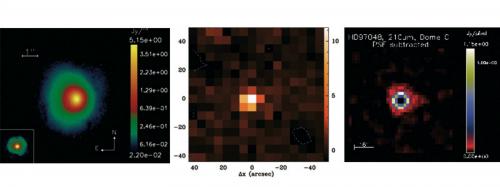
HD97048. Left: VLT/VISIR image of the HD97048 protoplanetary disk at 8.6 µm, showing its flared, extended surface (Lagage et al. 2006). The lower left inset is the VLT/VISIR PSF as a comparison. Middle: Observation of HD97048 with p-ArTeMiS/APEX at 450-µm with a pixel of 6''. Right: the HD97048 emission at 200 µm has been simulated using a radiative transfer code. A scaled PSF observation has been removed, showing that the disk image is resolved at 200 µm. This shows the potential to constrain the outer disk radius, which is very difficult to determine in the mid-infrared because of the lack of sensitivities to very cold dust.

